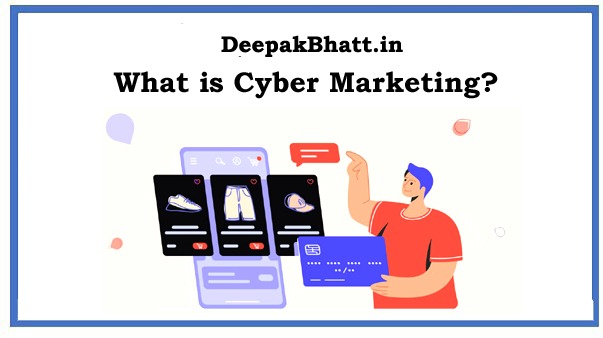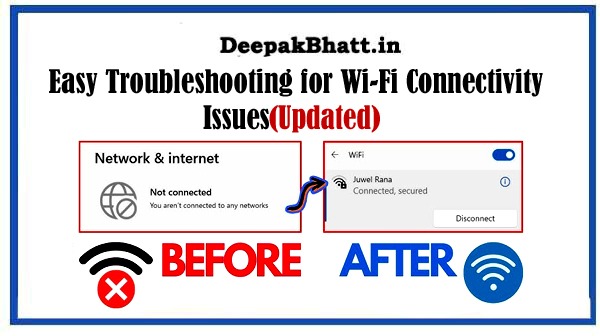What is Cyber Marketing: also known as digital marketing or online marketing refers to the use of digital technologies
Cyber Marketing, also known as digital marketing or online marketing, involves the utilization of digital technologies for promotional purposes.
It encompasses various strategies and techniques used to reach and engage with the target audience through digital channels.
In 2024, the concept of Cyber Marketing continues to evolve, offering businesses new opportunities to connect with customers in a dynamic and technologically-driven landscape.
such as the internet, social media, search engines, email, and mobile devices, to promote products or services and engage with customers.
What is Cyber Marketing
Cyber marketing includes a range of tactics and strategies to reach and connect with potential and existing customers, such as search engine optimization (SEO), social media marketing, email marketing, content marketing, affiliate marketing, and display advertising.
The goal of cyber marketing is to build brand awareness, generate leads and conversions, and ultimately drive revenue for a business.
It allows companies to reach a larger and more diverse audience, track and analyze customer behavior and preferences, and personalize marketing efforts to improve the customer experience.
Structure of What is Cyber Marketing
The structure of cyber marketing can vary depending on the specific business, industry, and marketing goals. What is Cyber Marketing
However, there are several common components that typically make up a comprehensive cyber marketing strategy:
1. Website:
A well-designed and user-friendly website is essential for any cyber marketing strategy.
The structure of cyber marketing can vary, but a common component is a well-designed and user-friendly website.
It serves as the central hub for all online marketing efforts and should be optimized for search engines and mobile devices.
2. Search Engine Optimization (SEO):
SEO involves optimizing a website’s content and structure to improve its ranking on search engines, such as Google, and drive organic traffic.
3. Content Marketing:
This involves creating and sharing valuable content, such as blog posts, videos, and infographics, to attract and engage a target audience. What is Cyber Marketing
Content marketing can help establish a business as a thought leader and build trust with potential customers.
4. Social Media Marketing:
This involves promoting a business and its products or services on social media platforms, such as Facebook, Twitter, and Instagram.
Social media marketing can help increase brand awareness, drive traffic to a website, and engage with customers.
5. Email Marketing:
Email marketing involves sending targeted messages to a list of subscribers to promote a business or its products or services.
Email marketing can help build customer relationships and drive conversions.
6. Pay-Per-Click Advertising (PPC):
PPC involves placing targeted ads on search engines or social media platforms and paying a fee each time a user clicks on the ad.
PPC can be an effective way to drive traffic and conversions, particularly for businesses with a limited organic reach.
7. Analytics and Reporting:
This involves tracking and analyzing data from various cyber marketing efforts to measure their effectiveness and make data-driven decisions to optimize the marketing strategy.
Overall, a successful cyber marketing strategy involves a combination of these components, tailored to the specific needs and goals of a business.
Free Courses:
Fundamentals of Cyber Security
How to Become a Cyber Security Expert
Cybersecurity Course for Absolute Beginners
Features of Cyber Marketing
Some of the key features of cyber marketing include:
1. Targeted audience:
Cyber marketing allows businesses to target a specific audience based on their demographics, interests, and behavior.
This helps to reach potential customers who are more likely to be interested in a business’s products or services.
2. Measurable results:
Cyber marketing allows businesses to measure the success of their marketing efforts through metrics such as website traffic, social media engagement, email open rates, and conversions.
This helps businesses to make data-driven decisions and optimize their marketing strategy for better results.
3. Cost-effective:
Cyber marketing can be more cost-effective than traditional marketing methods, such as print or TV advertising.
Many cyber marketing tactics, such as email marketing, social media marketing, and content marketing, can be done in-house with minimal cost.
4. Personalization:
Cyber marketing allows businesses to personalize their marketing messages to individual customers based on their preferences, behavior, and past interactions with the business.
This helps to improve the customer experience and build stronger relationships with customers.
5. reach:
Cyber marketing allows businesses to reach a global audience, regardless of their location. This helps to expand a business’s reach and increase its customer base.
6. Real-time feedback:
Cyber marketing allows businesses to receive real-time feedback from customers through comments, reviews, and social media interactions.
This helps businesses to quickly address any concerns or issues and improve the customer experience.
Overall, cyber marketing provides a range of features that can help businesses to reach their target audience, measure the success of their marketing efforts, and build stronger relationships with customers in a cost-effective way.
CYBER MARKETING MODEL
There are many different models and frameworks for cyber marketing, but one common model is the “customer journey” model.
The customer journey model is a framework that outlines the various stages that a customer goes through as they interact with a business, from initial awareness to purchase and beyond.
Here are the typical stages of the customer journey model in cyber marketing:
1. Awareness:
In this stage, a potential customer becomes aware of a business’s products or services through various marketing channels, such as social media, search engines, or online advertising.
2. Consideration:
Once a potential customer is aware of a business, they begin to consider whether the business’s products or services are a good fit for their needs.
They may research the business further, compare it to competitors, and read reviews or testimonials.
3. Conversion:
If a potential customer decides to purchase from a business, they enter the conversion stage.
This is where they make a purchase or take some other desired action, such as filling out a contact form or subscribing to a newsletter.
4. Retention:
After a customer has made a purchase, the retention stage begins. In this stage, the business focuses on building a long-term relationship with the customer through various tactics, such as email marketing, loyalty programs, and personalized offers.
5. Advocacy:
Finally, if a customer has a positive experience with a business, they may become an advocate for the business by recommending it to others or leaving positive reviews.
In the advocacy stage, the business can encourage and amplify this positive word-of-mouth by asking for reviews, running referral programs, and sharing user-generated content.
Overall, the customer journey model provides a framework for businesses to understand and optimize the various stages of the customer experience in cyber marketing, from initial awareness to long-term advocacy.
Nature of cyber-marketing
The nature of cyber marketing is dynamic and constantly evolving. It is characterized by the use of digital technologies, such as the internet, social media, and mobile devices, to promote products and services, engage with customers, and drive sales. Some of the key aspects of the nature of cyber marketing include:
1. Data-driven:
Cyber marketing is heavily reliant on data and analytics to measure the effectiveness of marketing efforts and make data-driven decisions.
With the abundance of data available from various digital marketing channels, businesses can track user behavior, measure engagement, and monitor performance to optimize their marketing strategy.
2. Interactive:
Cyber marketing enables businesses to interact with customers in real-time through various digital channels, such as social media, chatbots, and email.
This allows businesses to provide personalized and timely responses to customer inquiries, feedback, and complaints, and build stronger relationships with customers.
3. Multi-channel:
Cyber marketing encompasses a wide range of channels, including social media, search engines, email, and mobile apps.
Businesses can use multiple channels to reach customers at different stages of the customer journey and deliver a cohesive message across channels.
4. Targeted:
Cyber marketing allows businesses to target specific audience segments based on demographics, interests, and behavior.
This helps businesses to reach potential customers who are more likely to be interested in their products or services and increase the likelihood of conversion.
5. Cost-effective:
Cyber marketing can be more cost-effective than traditional marketing methods, such as TV or print advertising.
With the ability to target specific audience segments and measure performance, businesses can optimize their marketing budget and maximize ROI.
6. Global reach:
Cyber marketing allows businesses to reach a global audience, regardless of their location. This provides businesses with the opportunity to expand their customer base and reach new markets.
Overall, the nature of cyber marketing is characterized by the use of digital technologies, data-driven decision making, real-time interactions with customers, and the ability to reach a global audience in a cost-effective way.
Welcome all of you to my website. I keep updating posts related to blogging, online earning and other categories. Here you will get to read very good posts. From where you can increase a lot of knowledge. You can connect with us through our website and social media. Thank you






